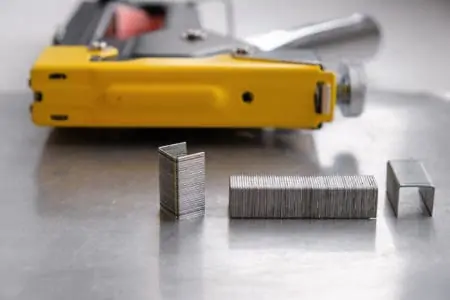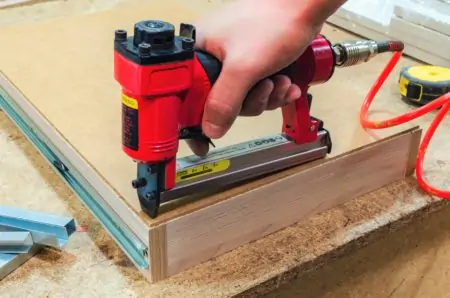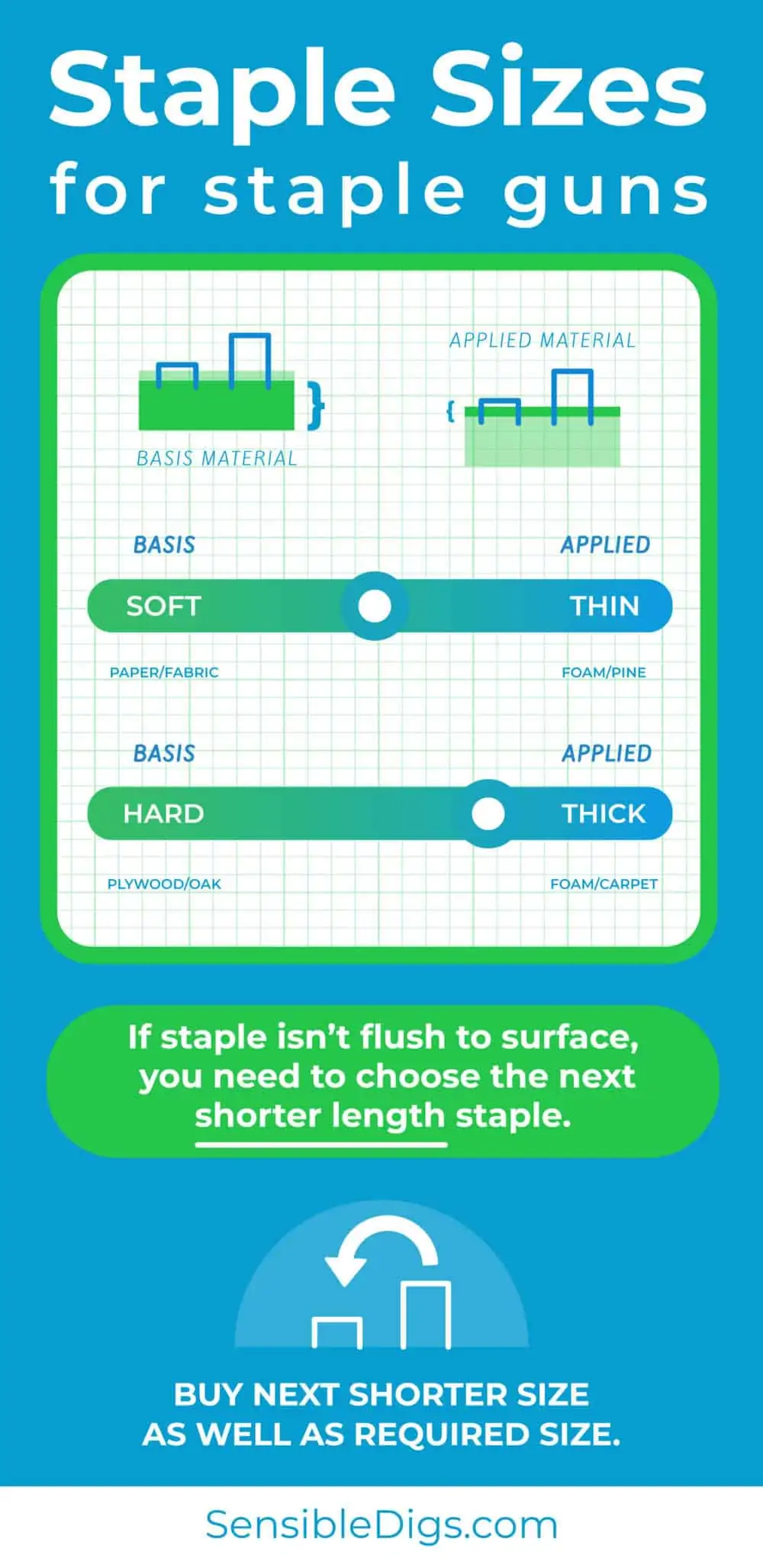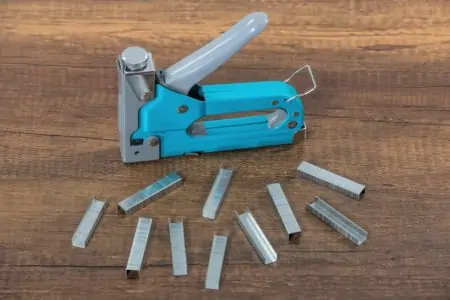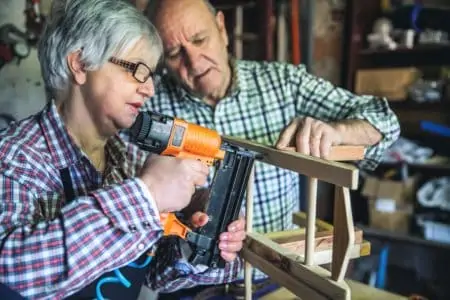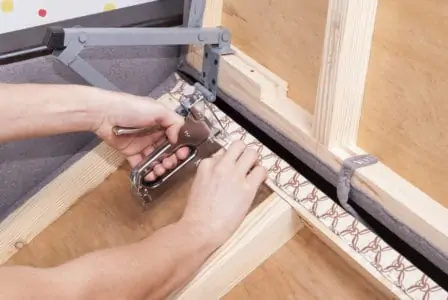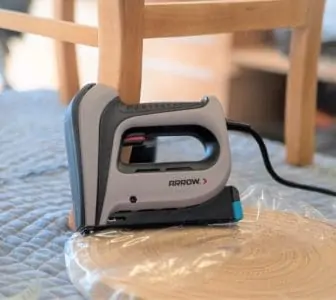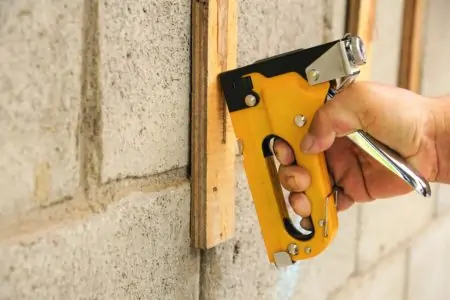Choosing the correct staples for your project is crucial if you want the best results. Different fasteners do different things, so how do you know which one to pick? More importantly, staple guns are not all the same, so you need to get the staples that match the gun.
We delve into the world of staple sizes to explore what each fastener does and its uses, to help you choose the correct one for your particular project.
Key Takeaways
- Choose the correct staple size based on the material and application, with leg length being 3 times the material’s depth.
- Flat wire staples are ideal for fastening cardboard, plastic foil, insulating foil, and carpets.
- Fine wire staples are small and discreet, making them perfect for upholstery and canvas stretching.
- Narrow crown staples work well for securing floors, paneling, and skirting boards in carpentry projects.
Can You Use Any Staples in a Staple Gun?
Your staple gun will likely fire different fasteners. However, be sure to read the owner’s manual to make sure. Some manufacturers make guns that only take their brand of staple, which is not an issue as they will also produce a comprehensive range of fasteners.
If you want the freedom to choose any staple, look for the word “universal” when shopping for a new staple gun.
Types of Staples for Staple Guns
So, you have a staple gun and need to know which staple is suitable for your task. Let’s take a look at the different varieties and focus on what applications they suit.
Flat Wire
Flat wire staples have a broad back, making them ideal for fastening corrugated cardboard, plastic foil, insulating foil, aluminum laminations and carpets. They come in various sizes ranging from 6 mm to 14 mm.
Fine Wire
Fine wire staples are small and discreet. They are ideal for upholstery because they are small and don’t leave cracking in the furniture or the material.
These are the type of fasteners you would use if you were reupholstering furniture or stretching canvas across a wooden frame. They come in sizes ranging from 4 mm to 12 mm. You can also buy medium wire and heavy wire versions for more robust applications like roofing and packaging.
Narrow Crown
Narrow crown fasteners have a thin back and long legs and are the perfect choice when you want to secure floors, paneling and skirting boards. In fact, they work on most materials used in carpentry because they sit deep under the surface.
They come in sizes ranging from 12 mm to 30 mm, as well as medium and wide crowns for more industrial applications like subflooring and pallets.
Cable Staple
As the name suggests, these types of fasteners are suitable for securing cables and wires, thanks to their distinct rounded backs, designed not to cause any damage to the low 50-volt cables.
If you want to tidy up computer, stereo or telephone cables, this is the type of staple to use. They come in sizes ranging from 4.5 mm to 6 mm.
Staple Size Dimensions
Getting the right staple size is crucial. The thickness and type of material should dictate the kind of staple that is suitable.
Leg Length
The leg length determines the types of material you can work with. For thicker materials like wood siding and flooring, the longer the leg, the better. Upholsterers use a fastener with long legs to sink deep into furniture frames, but they use the finest gauge to keep the staple discreet and to cause minimal damage to the wood and fabric.
In contrast, a smaller leg is suitable for packaging, cardboard and paper. Leg length sizes range from 0.50 inches to 2 inches for most industrial applications.
Wire Gauge
The wire gauge is the way manufacturers state the thickness of the staple wire. The higher the gauge number, the thinner the wire, and the lower the number, the thicker it is. This standard was set in the early 20th century by the American Wire Gauge standards.
To give you an example, here’s a handy chart:
Wire Gauge Chart
| Gauge | 22 | 21 | 20 | 19 | 18 | 16 | 14 | 12 | 10 |
| Fine | X | X | X | ||||||
| Medium | X | X | X | ||||||
| Heavy | X | X | X |
It is possible to get 23-gauge staples for detailed upholstery work and 9-gauge for wire fence construction.
Crown Width
The crown width determines the type of applications it is suitable for. If you have a broader crown, you can secure materials like carpets and pallets. They come in 3 sizes ranging from fine to wide.
However, different manufacturers measure the crown of their staples differently. Some take the outside measurement, while others use the inside calculation.
Plus, crown shapes vary, from wide and flat to curved crowns for electrical work.
How To Choose Staple Sizes for Staple Guns
The sizes often appear in the metric 2-number form, for example, 22/6. The first number relates to the gauge, so at 22, we know it is suitable for upholstery work and finer details, while the second number refers to the leg length.
The rule of thumb for choosing the correct staple size for staple guns is based on the application. It’s always advisable to select a fastener that is 3 times the length of the material. If you are working on wood with a 6 mm depth, the staple leg length should be 18 mm.
Fabric or Fastened Material Thickness
When fastening materials like fabric and plastic foil, the fastener should have a leg length 4 mm longer than the depth of the workpiece. If the foil is 3 mm deep, the staple needs to be a minimum of 7 mm in length.
If you can’t match the measurements exactly, go for a fastener with the closest shorter leg length available.
Wood or Base Material Thickness
For hardwood and other robust materials like flooring and wooden siding, the staple should be double the thickness of the workpiece. If your siding is 4 mm in depth, the fastener should measure 8 mm.
Again, if you can’t match this precisely, then the nearest leg length should suffice. Remember that you want the most secure fastening because of the nature of the material. You wouldn’t want your siding to fall off at the first sign of a breeze.
Let’s Recap
The thicker the staple, the lower the gauge number, and the thinner the fastener, the higher the gauge number. The crown thickness and shape cater to different uses like packaging and electrical cables, and the leg length determines the thickness of the material you can work with.
If you can remember all this and the multiple of 3 rule, you should have no issues getting the correct staple size.
